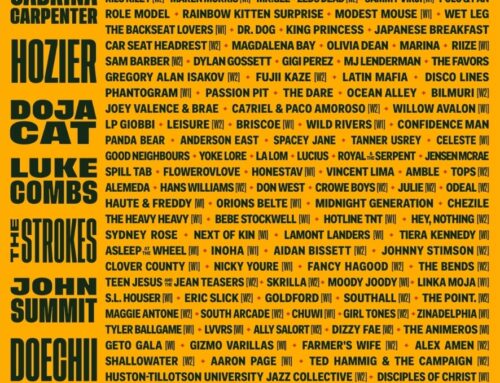In 2024, social networks have become a pastime for many people in developed countries. From scanning video sharing sites, to keeping in touch with family and friends on Facebook, the amount of hours people spend on their phones is in high demand.
Since the rise of social networking, the sites have focused on ways to keep people engaged, and this helps them by obtaining more information about their users that can use to promote ads, sell information to data mining companies, and ways to keep people glued to their site.
Personally, I find the way these companies collect information to be intrusive, but I do sign their terms and use their service, so in many ways, I am willfully providing my information to these companies in return for their content and functionality. At Crescent Vale, we do not sell your data, but we do use Google Analytics.
If a person allows a social network to use their microphone, that person opens themselves up to being recorded. Where I am seeing an issue is the amount of content suggested that I do not search for, I do not speak to, and I do not share online. It raises the question, if I did nothing to prompt a piece of content, where and why is the algorithm pulling the content. One case could be it is related content to other content, but I find that to be a weaker argument. In most cases, I connect dots to the timeline going on in my life. Next, I want to convey a personal story that happened to me.
An Example on Using the Timeline Theory
For example, we had a dog go missing last January. On Wednesday, January 4, our dog got loose and went missing around 8:00 p.m. He went missing next to our house at a church. The person that picked him up most likely had a geolocation close to mine around that time on Wednesday. At 9:30 p.m., I get a suggested video on YouTube that presented a person finding a dog, (not losing a dog, but a person finding a lost dog.) One could make an argument that it was hopefully thinking the social network put out, but I suggest that it was the person that found our dog talking around a smartphone, the YouTube software scanning their audio, transcribing it, and putting it into the algorithm, which later resulted in me getting a suggested video soon thereafter.
My thinking was, okay, since I cannot find our dog on foot, and research shows a lost dog will normally not travel more than a mile away from home, someone had to have picked him up. Over the next few weeks, I would be suggested videos about kids playing with a puppy. (I never searched for these types of videos in the past or watched them indirectly.) It informed me, I need to get some signs up in the area to try to communicate with the person that found our dog.
I put up signs, weeks passed, and on Thursday, February 9, I get suggested a video about a person noticing their dog was neutered, and that they want to give it back. (Our dog is neutered.) Later that same day, I get a phone call.
The person that found our dog saw a sign that we put up and wanted to meet up to return our dog.
For weeks, I kept my cool about the dog missing. In the back of my mind, I knew that these suggested videos were not random, and they were suggested in a very specific chronological order. Now, I cannot definitely say that these videos are always 100 percent accurate with what is happening with our lives, but if you see similar parallels, it is worth being aware of potentially being manipulated by the networks.
Next, let’s take a look at what Grok, the artificial intelligence tool at Twitter, has to say about algorithms.
Twitter Home Feed Algorithm
The home feed algorithm is designed to personalize the content you see based on your interactions and preferences. It uses various signals to determine which posts are the most relevant to you. These signals include the author of the post, how long ago the message was posted, who replied, who reacted, and the total engagement on the post. Additionally, the algorithm takes into account the communities and people you engage with most frequently within the platform. This includes interactions in the platform itself, as well as other Microsoft 365 tools like Outlook and Microsoft Teams.
The algorithm scans all available content every time you visit the feed, ensuring a personalized experience. It ranks threads based on your affinity with certain communities and individuals, and it can also remove content from muted communities. Rich media, such as images and videos, can significantly boost engagement on posts. The feed only shows content from the past 30 days, and featured conversations by community admins are prioritized near the top of your feed.
There are also ways to customize your feed, such as muting specific communities, which guarantees you won’t see content from them unless it’s featured by the community admin. The feed also includes content that the algorithm predicts could be interesting based on high engagement across the organization, even if it’s not from a community you’re subscribed to.
This approach aims to drive discovery and engagement across communities and storylines, ensuring that every person’s home feed is unique due to their different interests and interactions.
YouTube Home Feed Algorithm
YouTube’s suggested video algorithm is designed to provide personalized recommendations to users based on their watch history, content performance, and engagement metrics. The system aims to find content that viewers are most likely to watch based on their interests. It does not directly promote videos to an audience but rather seeks to match videos with the interests of viewers. Factors that come into play include the number of views, the rate at which views are accumulating, the source of views (whether from within or outside of YouTube), the age of the video, and how it performs compared to other recent uploads from the same channel.
The algorithm combines these signals to offer a list of videos that showcase what’s happening on YouTube while being relevant to viewers and reflective of the content on the platform. The content of the video itself is not evaluated; instead, metadata like the title, description, and the keywords used in the video’s file name, are crucial for YouTube to understand the content and suggest it to appropriate viewers.
YouTube also gives users some control over their algorithm experience. Users can provide direct feedback by clicking on the three vertical dots just below a video, which can impact the kind of content that appears in their feed. This feedback mechanism allows users to shape their recommendations based on their preferences.
Moreover, YouTube emphasizes the importance of creating content that appeals to the audience. Creators should consider what their audience wants to watch and how to make their videos stand out on the YouTube homepage or suggested content areas. Engaging content that keeps viewers watching is crucial for being recommended by the algorithm.
To improve the chances of videos being suggested, creators can focus on audience retention, especially in the first 30 seconds, to boost watch time. Creating timely videos and maintaining a consistent visual style across all thumbnails are also recommended strategies.
In summary, YouTube’s suggested video algorithm works by analyzing various signals related to a video’s performance and viewer engagement, combined with direct user feedback, to offer personalized video recommendations to viewers.
Facebook Reels Suggested Content
The Facebook Reels suggested videos algorithm works by using two primary systems to rank and display content in the feed. The first system calculates a relevance score for about 500 posts, then ranks them in descending order based on factors such as the likelihood of a user engaging with a post by liking, commenting, or sharing it. The system is designed to show a variety of content in the feed, meaning a user shouldn’t see multiple video posts in a row. The second system, for the Reels feed, uses a secondary recommendation system to rank the short-form videos that appear next as the user scrolls. It takes into account factors such as how likely the user is to view a reel from the feed, the likelihood of completing the reel, and the likelihood of leaving a positive reaction on the reel.
Facebook’s AI also predicts the value a post may deliver to a user based on past behavior and the post’s popularity. It evaluates each post, ad, Story, and Reel, with the aim of showing the content it believes a user may be most personally interested in at the top of each surface. The algorithm considers various actions and signals, such as how likely a user is to engage with the post or how likely they are to view the original creator’s profile or follow them. It also takes into account actions like sharing a video to the user’s feed or clicking to view the creator’s profile as positive indicators of interest.
Moreover, the system is designed to prioritize variety to provide a mix of video, image, and text posts. It aims to show different kinds of content, ensuring a diverse and engaging experience for users. Additionally, Facebook provides tools for users to take back control of the content they see, such as the ‘Why Am I Seeing This?’ feature, which offers more detailed information about the factors influencing content ranking in their feeds.
In summary, the Facebook Reels suggested videos algorithm works by evaluating content based on user engagement and relevance, prioritizing variety, and offering users some control over the content they see. It uses AI to predict the value of posts and to display content in a personalized and engaging manner.




